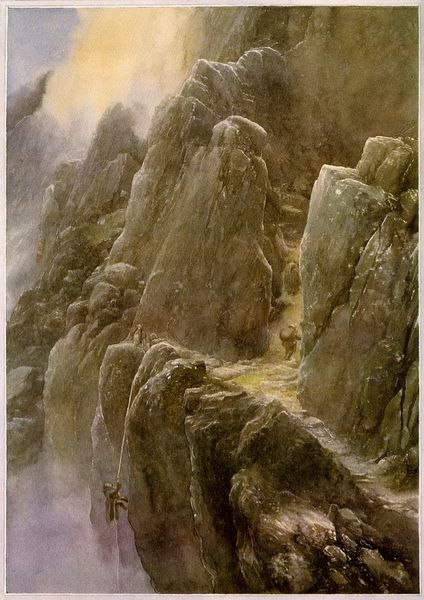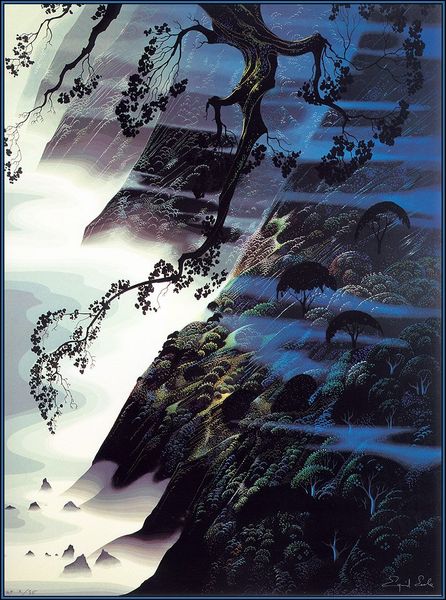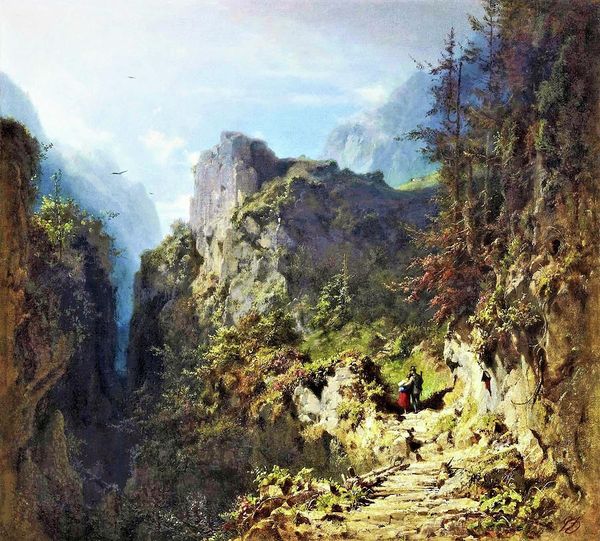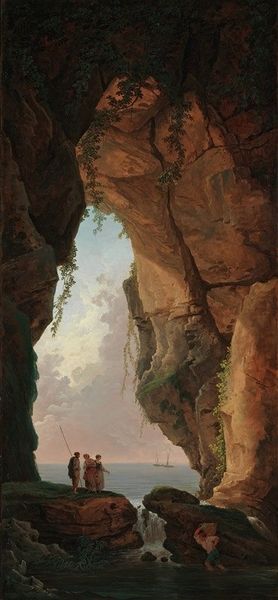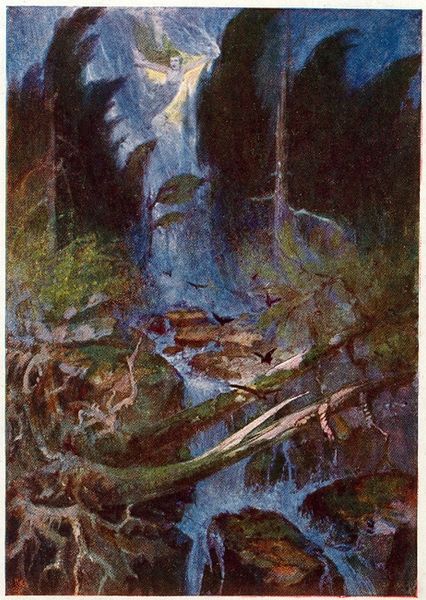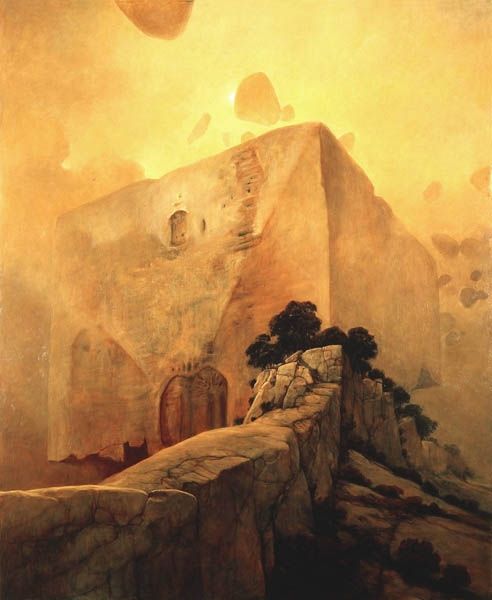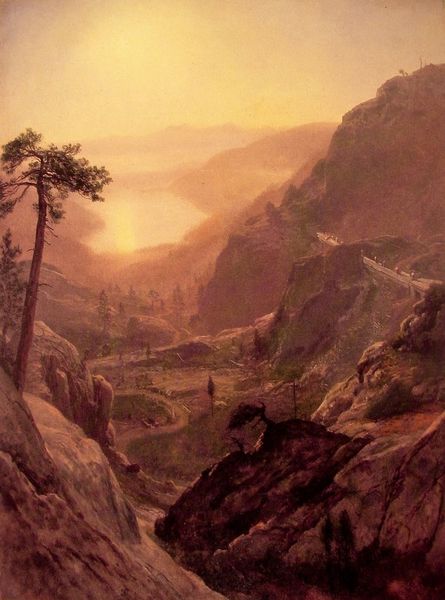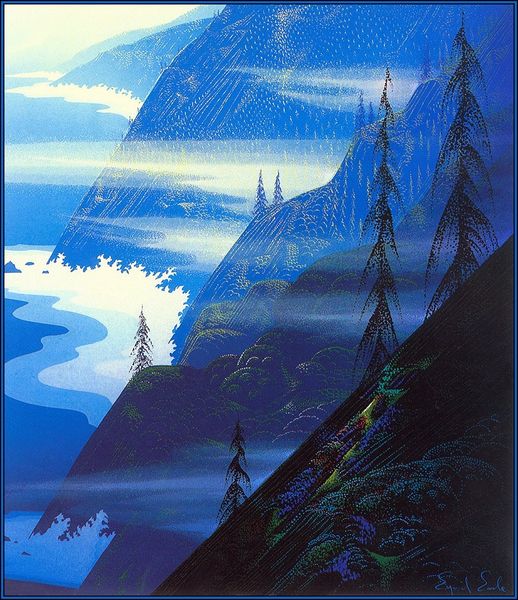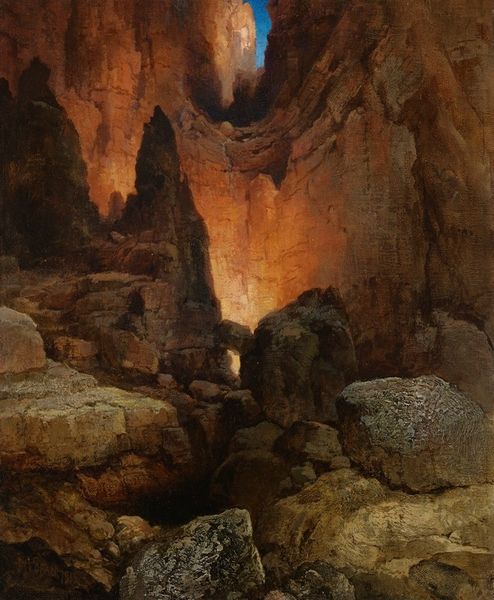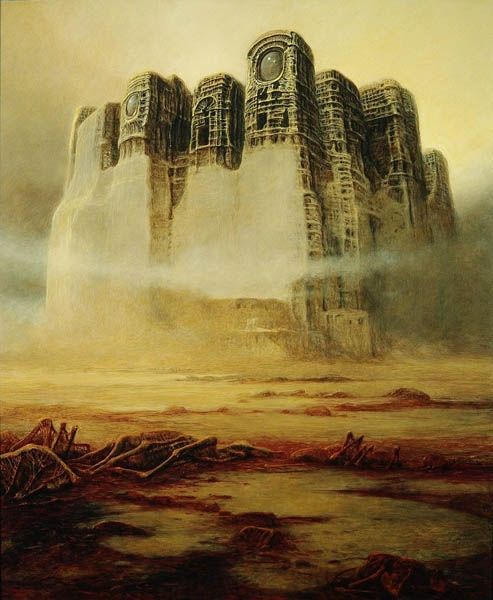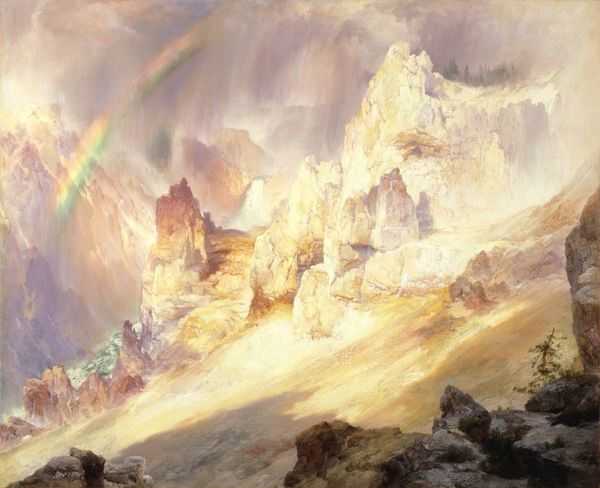
oil-paint
#
oil-paint
#
landscape
#
nature
#
romanticism
#
natural-landscape
#
nature
Dimensions: 94 x 74 cm
Copyright: Public domain
Curator: Friedrich’s “Rocky Ravine,” an oil painting from 1823, draws us into a dramatic, almost theatrical landscape. Editor: The sheer scale of the rocks is breathtaking, a bit overwhelming, even. And that light! It both reveals and obscures, creating a sense of mystery. It’s like a stage set, as you suggested. Curator: Indeed, Friedrich staged the painting’s debut at the Dresden Academy, inviting audiences to grapple with these powerful images in public display. How might this deliberate exhibition impact its reception, I wonder? Editor: He definitely wanted to control how viewers saw this. The composition, with the eye drawn into the depths of the ravine, funnelled into a blinding light – it directs our gaze, evoking sublimity by pitting tiny figures against the immensity of nature. Did you notice how the diagonal line, made up of fallen trees, intersects the vertical ones to build tension within the piece? Curator: It’s Friedrich’s Romanticism shining through: using nature not just as scenery, but as a mirror reflecting human emotion amidst larger societal anxieties of political revolution and instability following the Napoleonic wars. Those small figures huddled at the painting's bottom can also suggest the precarity of man vis-à-vis Nature's power. Editor: A precarity emphasized by those seemingly precariously balanced rock formations! Also, consider how Friedrich’s application of the paint; thin layers creating depth, especially in the misty areas, and thick, textured strokes for the rocks. It brings it all into high relief. Curator: And yet, despite the Romanticism and this feeling of sublime dread, there's a very calculated sense of artistry here. Friedrich wasn't simply painting nature; he was crafting an experience, one that reflected Germany’s historical anxieties. Editor: Well, by masterfully wielding light, color, and composition, Friedrich provokes, unsettles, and ultimately invites us to ponder humanity's place in the grand scheme, just as society was undergoing transformation. It's beautiful, and terrible, all at once. Curator: That tension—the push and pull between humanity and nature, stability and uncertainty— encapsulates, perhaps, a critical commentary embedded in pictorial representation that art offers for the public domain.
Comments
No comments
Be the first to comment and join the conversation on the ultimate creative platform.

